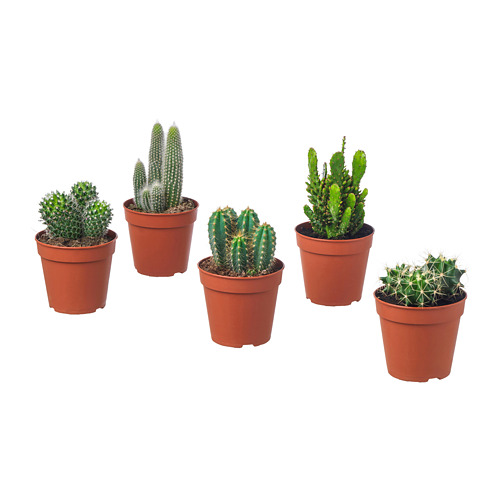Having plants around doesn’t just feel good. Even science says that green is good for you. And maybe the time has come to pay your lovely green plants back? Here are some tips and tricks on how to care for the plants so that you can enjoy their beautiful appearance for longer.

It all starts with a good care
Every IKEA plant has a label, where you will find useful tips on how often your plants should be watered, what degree of sunlight is optimal for them to develop, and what else you can do to make them feel loved and happy.

The difficulty of growing
When choosing a plant, pay attention to your lifestyle and the care level it requires. If you travel a lot or just forget to water the plants - choose one that tolerates dry periods. The lower the degree of difficulty, the greater the chance that your plant will grow beautifully with minimal care.
Watering
How often you should water depends on the plants. Our labels have drops as guides: 1) once a week or every second week, 2) once/twice a week—no standing water, or 3) two/three times a week—no dry soil. You can also try the thumb test: if the soil in the pot is sticking to your thumb, there is no need to water. Remember that plants need more water in summer than in winter.
Repotting
Plants don’t need to be repotted within the first year after purchase. As the plant grows, remember to adjust the pot to the current size of the plant to give it enough space for further development.

Fertilization
Generally, plants get enough fertilizer for about 1-3 months after purchase. Soil conditioners should be used less often during the rest period (in most cases, it happens during the winter).
Cleaning
Regularly remove dust from the leaves, so that the plant gets as much light as possible, and it will definitely pay off with a lush and healthy appearance.
Growing conditions
To figure out what plants will work in your space, consider your sunlight. Our plant labels show whether a plant needs shade, indirect light, or full sun. They also say if it can be indoors or outdoors and what temperature it likes.IKEA Family price

























































































































